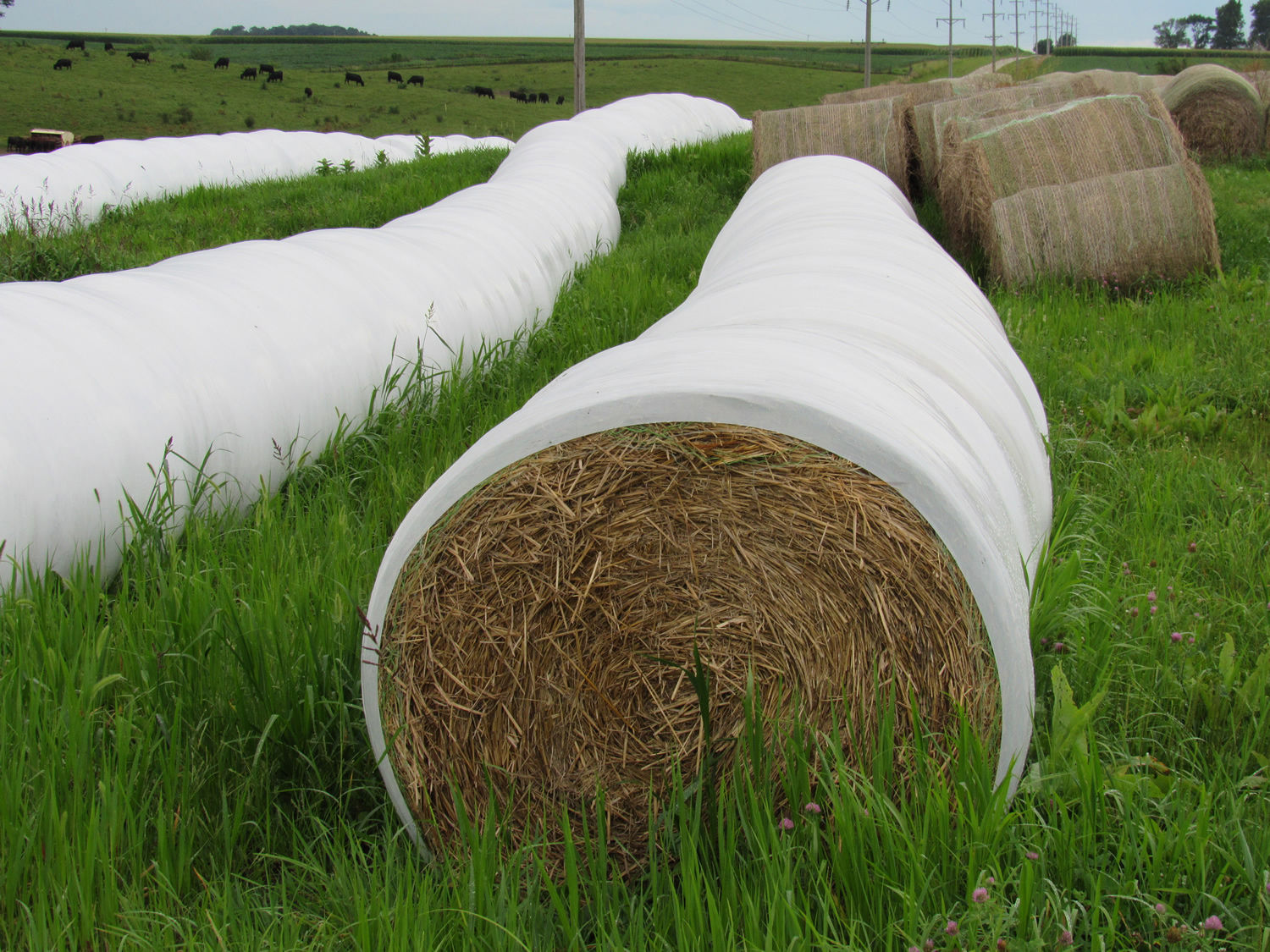State-By-State Hay Summary

Colorado—In the Aug. 15 report, trade activity and demand light. Ask prices from growers remain mostly unchanged this week. Stable hay sold mostly steady. According to the NASS Colorado Crop Progress Report for week ending Aug. 11, alfalfa second cutting harvested is 62%, third cutting 15%. Stored feed supplies were reported as 3% very short, 4% short, 69% adequate, and 24% surplus.
Missouri—In the Aug. 15 report, hay prices are mostly steady. The supply of hay is moderate to heavy, and demand is light. Forecast of several rounds of rain had most producers out of the fields this week other than perhaps hauling some hay to fence rows or barns if there was any room left. Hay movement remains slow with a lot of hay being offered for sale across the state.
Nebraska—In the Aug. 15 report, compared to last report, baled hay sales and ground and delivered hay sold steady on a thin test. Dehydrated pellets traded $25 lower in the Platte Valley. Demand was light. Quite a lot of hay sitting around in most areas of the state. Quite a few hay producers are struggling to move hay this summer across the state. Many factors going into the slow hay formula, decent rains in most areas, low cattle inventories, most cattle still able to graze summer grass pastures without any supplementation and several prospective buyers are carrying over a large inventory of 2023 hay supplies. The “old timers” say hay market usually follows the corn market in normal production years. Overall, there isn’t enough “mouths” to eat the tonnage of hay sitting around. If Mother Nature deals the state and early snow and cattle can’t hit the stock fields this hay market could snap up some.
Oklahoma—In the Aug. 16 report, compared to the last report, the hay trade is at a standstill. Oklahoma still has a lot of 2023 hay, which is being sold and still stacked in barns. The timely rains and cattle continuing to be sold has made it hard for hay producers to sell hay. Next report will be released Aug. 30.
Texas—In the Aug. 9 report, compared to last report, hay prices are mostly steady across all regions. Hay trade is still pretty limited on poor to moderate demand. In the southern and eastern regions producers were cutting and baling hay. The majority of the state is experiencing hot and dry weather conditions with the exception of a few counties in the east. Pasture and range conditions were rated at 55 percent fair to good, but with limited moisture in the forecast they may continue to deteriorate over the next few weeks. Supplemental feeding has been minimal so far, but may pickup as the effects of the La Nina weather pattern take hold that may change. Next report will be released Aug. 23.
South Dakota—In the Aug. 15 report, compared to last report, demand and movement has been a lot slower than normal, producers are saying it has been quiet.
New Mexico—In the Aug. 16 report, compared to last report, hay is steady, demand is light with not much movement. Most hay is being stored in the barns. According to the NASS, New Mexico Crop Progress report, for the week ending Aug. 11, alfalfa hay is in the third cutting with 56% complete and fourth cutting 27% complete.
Wyoming—In the Aug. 15 report, compared to the last report, bales of hay sold steady on a thin test. Sun-cured alfalfa pellets sold steady with hay cubes selling $20 per ton lower. Demand was light. Interesting year in the hay world. Most of the state is dry to very dry but ranchers are still sitting on the fence about buying hay for fall and winter use. Hay producers are thinking they can push the market higher due to the drought. But there seems to be a lot of 2023 hay sitting around along with the new crop keeping prices lower than the last several years.
Montana—In the Aug. 9 report, compared to last report, hay sold generally steady. New crop hay continues to see slow movement as most producers are seeing light to moderate demand. Rancher to rancher sales are continuing to make an impact on the market as many ranchers are opting to sell new crop hay while feeding old crop hay this winter. Most rancher to rancher sales are at or slightly under the price that major producers have hay priced. Export hay demand remains light as many exporters have ample hay supplies purchased from last year that have yet to ship and many have hay purchased that is not sold yet. Ample supplies remain on the market as heavy carryover continues to weigh on the market. Lower cow numbers and a very mild winter along with a sticker shock for producers from record high prices in 2022 to more historically normal prices in 2023 led many producers to hold on to hay in the hopes the market improved. As a result, producers continue to struggle to finish moving old crop hay and have new crop hay yet to move as well. Prices for better new crop feeder hay is starting to establish itself with most hay priced from $125-$145. Next report will be released Aug. 26.



